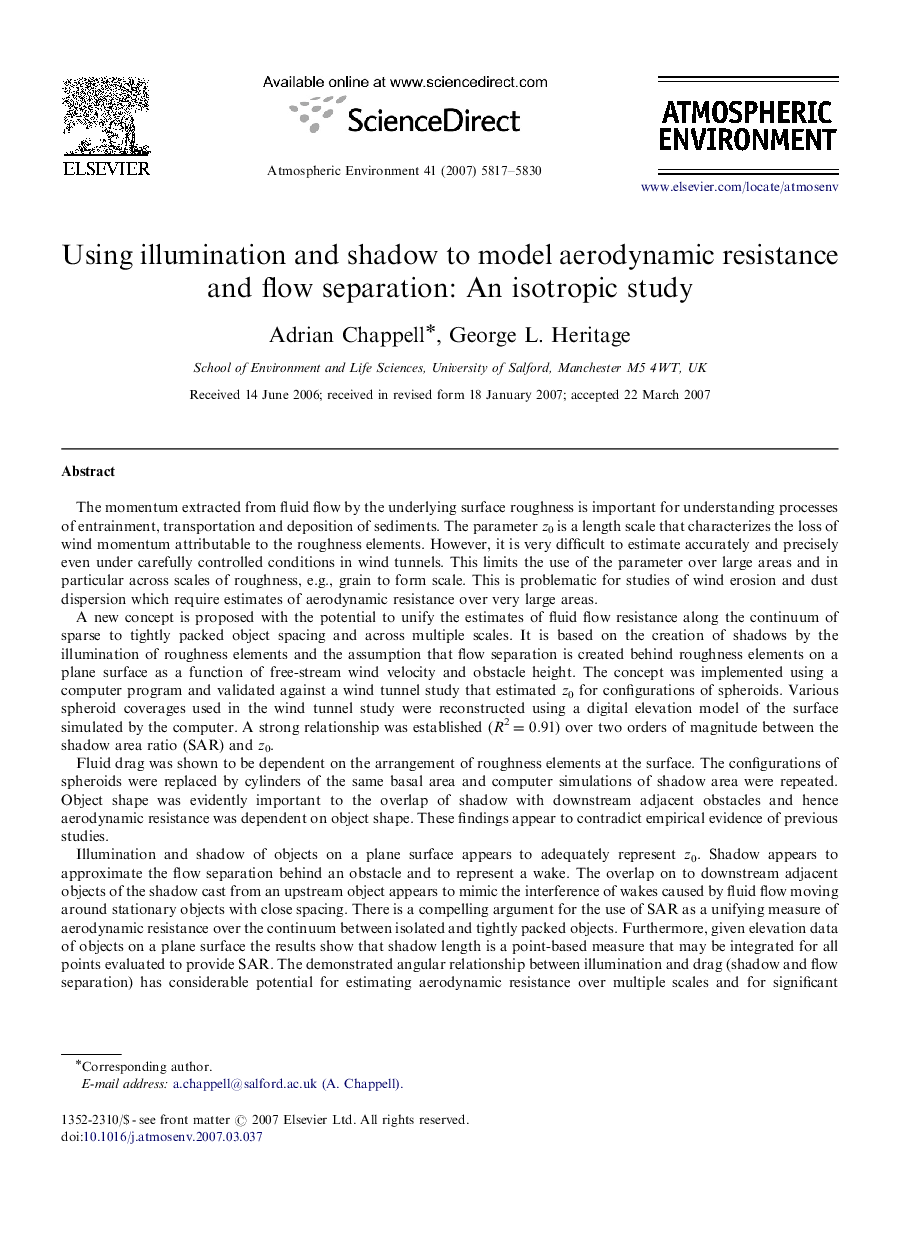| کد مقاله | کد نشریه | سال انتشار | مقاله انگلیسی | نسخه تمام متن |
|---|---|---|---|---|
| 4442565 | 1311157 | 2007 | 14 صفحه PDF | دانلود رایگان |

The momentum extracted from fluid flow by the underlying surface roughness is important for understanding processes of entrainment, transportation and deposition of sediments. The parameter z0 is a length scale that characterizes the loss of wind momentum attributable to the roughness elements. However, it is very difficult to estimate accurately and precisely even under carefully controlled conditions in wind tunnels. This limits the use of the parameter over large areas and in particular across scales of roughness, e.g., grain to form scale. This is problematic for studies of wind erosion and dust dispersion which require estimates of aerodynamic resistance over very large areas.A new concept is proposed with the potential to unify the estimates of fluid flow resistance along the continuum of sparse to tightly packed object spacing and across multiple scales. It is based on the creation of shadows by the illumination of roughness elements and the assumption that flow separation is created behind roughness elements on a plane surface as a function of free-stream wind velocity and obstacle height. The concept was implemented using a computer program and validated against a wind tunnel study that estimated z0 for configurations of spheroids. Various spheroid coverages used in the wind tunnel study were reconstructed using a digital elevation model of the surface simulated by the computer. A strong relationship was established (R2=0.91) over two orders of magnitude between the shadow area ratio (SAR) and z0.Fluid drag was shown to be dependent on the arrangement of roughness elements at the surface. The configurations of spheroids were replaced by cylinders of the same basal area and computer simulations of shadow area were repeated. Object shape was evidently important to the overlap of shadow with downstream adjacent obstacles and hence aerodynamic resistance was dependent on object shape. These findings appear to contradict empirical evidence of previous studies.Illumination and shadow of objects on a plane surface appears to adequately represent z0. Shadow appears to approximate the flow separation behind an obstacle and to represent a wake. The overlap on to downstream adjacent objects of the shadow cast from an upstream object appears to mimic the interference of wakes caused by fluid flow moving around stationary objects with close spacing. There is a compelling argument for the use of SAR as a unifying measure of aerodynamic resistance over the continuum between isolated and tightly packed objects. Furthermore, given elevation data of objects on a plane surface the results show that shadow length is a point-based measure that may be integrated for all points evaluated to provide SAR. The demonstrated angular relationship between illumination and drag (shadow and flow separation) has considerable potential for estimating aerodynamic resistance over multiple scales and for significant investigations of (i) the anisotropic nature of aerodynamic resistance and (ii) its estimation using directional measurements of reflectance and bidirectional reflectance models.
Journal: Atmospheric Environment - Volume 41, Issue 28, September 2007, Pages 5817–5830